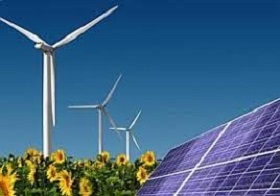Analytics, Ecology, Energy, Estonia
International Internet Magazine. Baltic States news & analytics
Friday, 26.12.2025, 17:34
Estonia: State hoping to bring renewable energy subsidies to zero by 2030
 Print version
Print version |
|---|
The experience of neighboring countries shows that the share of subsidies in such auctions turns out to be close to zero, that is renewable energy is also profitable without paying extra.
While consumers are paying producers a support of more than 53 euros per megawatt-hour of electricity coming from wind turbines, the country hopes bring renewable energy subsidies to zero by 2030. Movement toward that goal is gradual, meaning it is to be carried out with the aid of underbidding. This means that the country sets a target for the amount of renewable energy that needs to enter the market, and then the renewable energy developers say what the minimum amount of support they need is, the "Aktuaalne kaamera" evening news program of public broadcaster ERR reported.
Timo Tatar, deputy secretary general for energy at the Ministry of Economic Affairs and Communications, told ERR that the support is to decrease drastically as investments have become cheaper. "Technology prices have come down a lot and this kind of underbidding mechanism, if enough competition is guaranteed, should lower the subsidy rate in Estonia several times," he said.
The wider use of renewable energy must reduce air pollution in Estonia. While Estonia currently emits nearly 21 mln tons of carbon dioxide (CO2), by 2030 the obligation is to reduce air pollution to 12 mln tons per year.
This means that while electricity from renewable sources accounted for 17.1% of total consumption last year, it should rise to at least 37% by 2030. Together with the transport sector and the heat economy sector, the share of renewable energy must rise to 42% instead of the current 30%.
The government foremost hopes to increase the share of wind energy. A total of 139 wind turbines are currently in use. There are 12 wind farms with network connection agreements all over Estonia. These are under development and there are various disputes over their construction currently underway.
Wind turbines are currently producing approximately 670 gigawatt-hours of electricity a year. By 2030, the target is to increase the volume of wind energy by at least three and a half times and reach 2,500 gigawatt-hours of annual output.








 «The Baltic Course» Is Sold and Stays in Business!
«The Baltic Course» Is Sold and Stays in Business!

